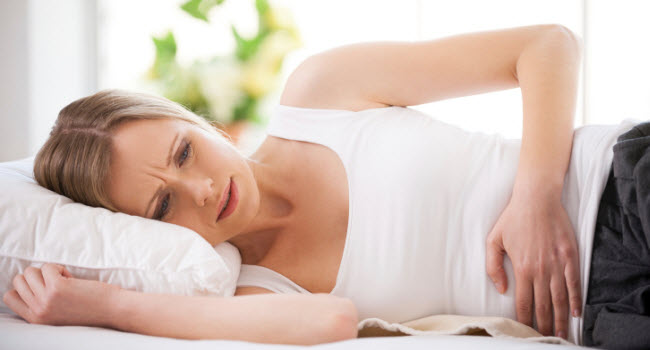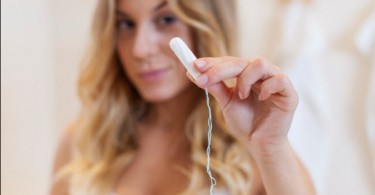
Advertisements
50% of all women will experience menstrual cramps at some point in their life. Which is a nice medical way of saying that half of you have had the sensation of a tiny T-rex trying to claw its way out of your uterus during your period.
Menstrual cramps normally make their first annoying appearance a year or two after a girl gets her first period, and often, they get better with age. (Hey, at least something does!) The pain usually starts with the onset of bleeding and lasts for a few days.
What causes the pain?
The uterus is made entirely of muscle with the exception of the innermost lining, the endometrium. With each menstrual cycle, the inner lining of the uterus prepares for an embryo to implant by growing a layer of tissue, rich with blood vessels and nutrients. When the body realizes that it is not pregnant, a hormone shift occurs that triggers the onset of the period and the release of chemicals called prostaglandins, which make the muscle of the uterus contract to push out the unused blood. The higher the levels of prostaglandins, the stronger the uterine muscle contractions, the more severe the pain. So menstrual cramping is the physical sensation you get as the muscles of the uterus contracts to evict the unused inner lining. For many women the pain resolves with a couple ibuprofen, but for others, the pain can be debilitating and effect their quality of life, causing them to miss school or work. However, there are multiple treatment options available to provide relief.
How do I make the pain stop?
NSAIDs. One of the easiest ways to treat cramps is to stop productions of the nasty prostaglandins that causes the mess in the first place. The NSAID (nonsteroidal anti-inflammatory) class of drug does just that. Common over the counter medications like naproxen and ibuprofen fall in the class. If you start taking the NSAIDs 1-2 days before the onset of cramping they work even better. (NSAIDs are not recommended for people with stomach ulcers. Please read warning labels on all medications and check with your doctor before using them.)
Sponsored Links
Heat. Heat is highly effective for reducing menstrual pain. While you can’t always walk around with a heating pad, and sadly I can’t write you a note to sit in a hot tub all day during your period, newer topical stickers that contain chemical heating elements are an excellent choice for menstrual pain.
TENS unit. A transcutaneous electrical nerve stimulator (TENS) is a device you wear over an area of pain that stimulates your nerves with electricity in an attempt to essentially confuse the pain fibers. It has been shown in clinical trials to reduce menstrual pain with minimal side effects. TENS units can be purchased without a prescription, but I recommend that you check with your doctor before you buy one on your own. The TENS units available online may be less expensive, but they likely won’t work as well as the pricier ones that can be ordered through a doctor’s office. And some insurance policies cover TENS units when ordered by a doctor, so it’s worth asking about.
Massage and exercise. Lower back massage and aerobic exercise have both been shown to reduce cramping and pain associated with your period. If you are like me and don’t have the time or money to get a massage each month with your cycle, self-massage is also an option.
Hormone therapy. Oral contraceptives (the birth control pill) can reduce menstrual pain and cramping by up to 90%. The pill works by keeping your hormones at a steady state, so less tissue is grown in the uterine lining and with no hormone shift, the prostaglandin production doesn’t get triggered. Depo-Provera (the birth control shot) also works in a similar manner to reduce cramping. I often see mothers of teenagers who fear that starting their girls on the pill will encourage sexual activity, but clinical studies have shown this is not the case. And medically, the pill truly is the best medicine for menstrual cramps.
When should I be worried?
If your menstrual pain did not fit with my initial description or you have any of the following symptoms, you should see a doctor:
- The sudden onset of menstrual cramping later in life (above age 20)
- Pain that returns after being gone for several years
- Pain at times of the month other than your period
- Menstrual cramping not relieved by NSAIDs
- Pain with intercourse
Menstrual cramps are painful (sometimes extremely so), but they are treatable. If you are experiencing severe menstrual cramps that you’re unable to relieve on your own, follow up with your provider.
by Heather Rupe, DOBoard-certified OB/GYN



Comments